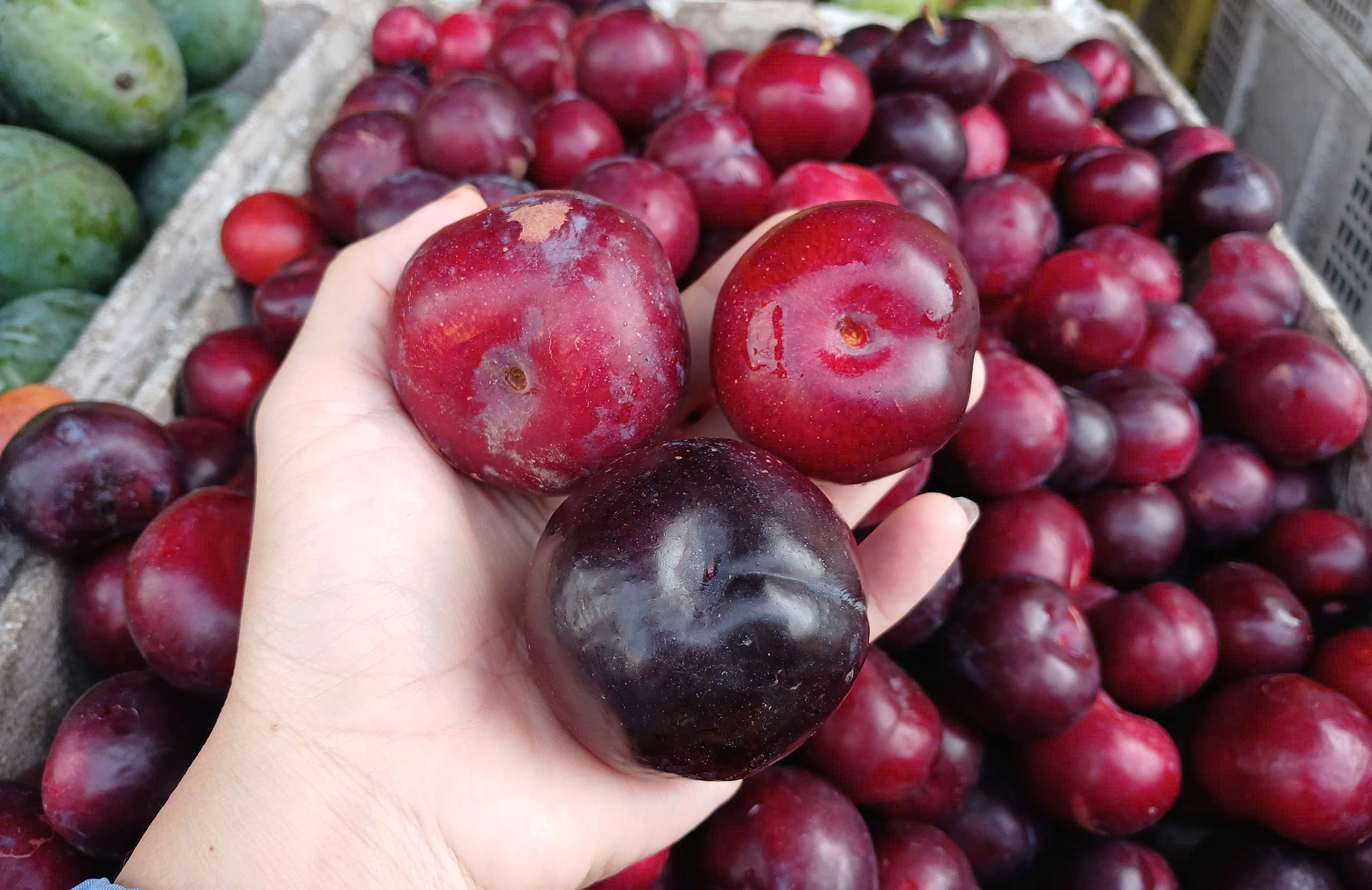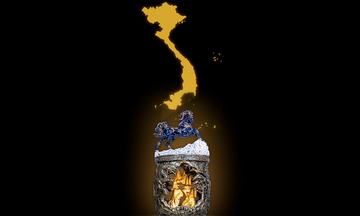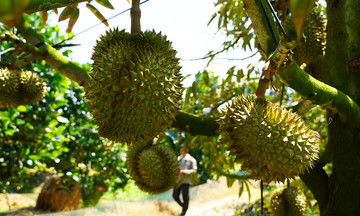In recent years, China has promoted the application of technology in agriculture, creating many new fruit varieties. Among them are premium fruit varieties from Japan, South Korea, Chile, and Vietnam that China has successfully propagated and brought to market at significantly lower prices.
In Vietnam, while Chilean cherries cost around 300,000 Vietnamese dong per kilogram, the Chinese cherry plums are priced at only 30,000-50,000 Vietnamese dong, depending on size.
 |
Cherry plums sold at a fruit stall in Pham Van Hai Market, Tan Son Hoa Ward (TP HCM). Photo: Thi Ha |
Cherry plums sold at a fruit stall in Pham Van Hai Market, Tan Son Hoa Ward (TP HCM). Photo: Thi Ha
Hoang Anh, owner of a fruit store on Le Duc Tho Street, An Hoi Dong Ward (TP HCM), said she previously only sold Chilean cherries. However, for the past two years, she has been importing Chinese cherry plums due to their attractive prices, complete documentation, and comparable quality. "This variety has firm fruit, yellow flesh, and a sweet and sour taste, unlike the intensely sweet Chilean cherries," she said.
Chinese cherry plums are widely available in traditional markets and many stores in TP HCM. At Pham Van Hai Market in Tan Son Hoa Ward, Hong, a fruit stall owner, reported selling over 200 kg since the beginning of the month. "This fruit is visually appealing and offers a unique flavor, making it popular with customers. The affordable price also makes it accessible to low-income earners," she explained.
Dinh, a wholesaler at Thu Duc Market, said he imports several tons daily, with wholesale prices around 27,000 Vietnamese dong per kilogram, with further discounts of 1,000-2,000 Vietnamese dong for bulk purchases. Each kilogram contains 18-28 fruits, depending on size.
A representative from Thu Duc Wholesale Market confirmed that 1,657 tons of plums have arrived at the market since the start of the season, a decrease compared to last year. However, this year's prices are lower. Compared to other plum varieties, the price of Chinese cherry plums is much more competitive, making them a preferred choice for small traders. Currently, a 9 kg basket of plums is sold wholesale for 220,000-250,000 Vietnamese dong, meaning each kilogram costs 24,000-27,000 Vietnamese dong, down 20% compared to the same period last year.
According to import companies, the low prices are due to China's good yield this year and lower investment costs. Some experts suggest that in addition to economies of scale, China has optimized preservation and transportation, significantly reducing costs and driving down selling prices.
This fruit is a cherry plum – a hybrid between a plum and a cherry. China cultivates it extensively in Sichuan, Guizhou, and Chongqing, with harvests from May to July. Sichuan alone is expected to produce 3,000 tons this year. The fruit is small, with glossy red skin, yellow flesh, a mildly sweet taste, a low price, and is often mistaken for imported cherries.
Customs data shows that in the first six months of the year, Vietnam spent 402 million USD importing fruits and vegetables from China, a 1.2% increase over the same period. In addition to cherry plums, other varieties like seedless lychees and Java plums have also flooded the Vietnamese market.
Thi Ha












